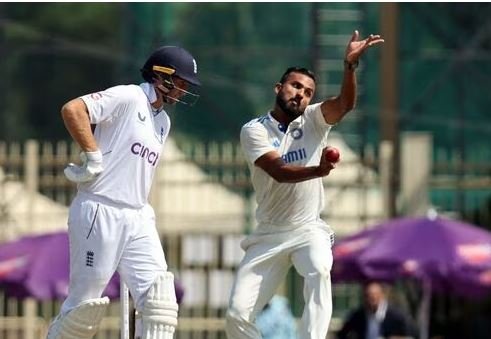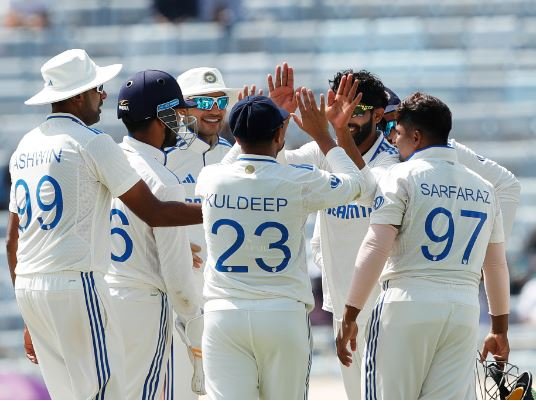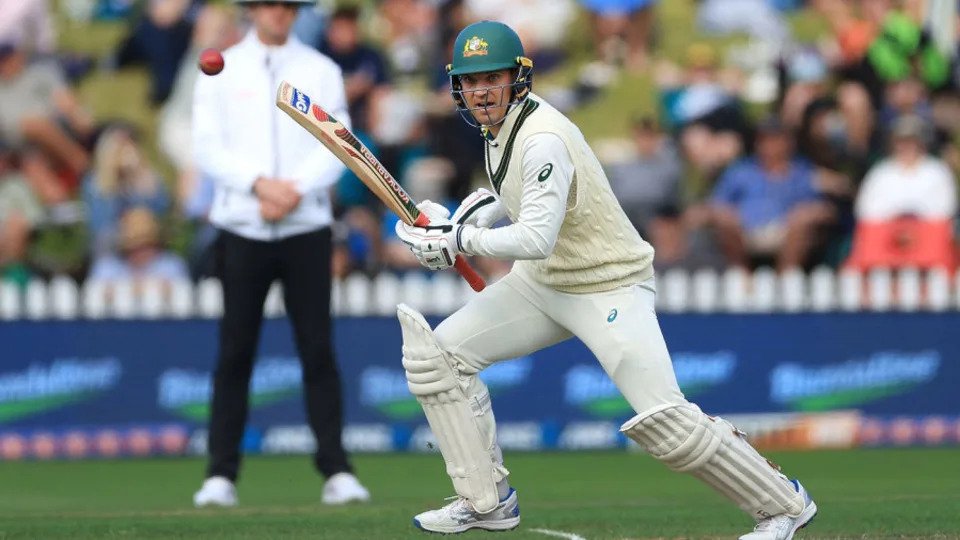In a dramatic turn of events on the first day in Ranchi, Joe Root’s sensational century not only marked his return to form but also propelled England into a commanding position against India.

England post 302 for 7 at the end of play after a five-wicket morning. Teammate Zak Crawley said that Joe Root’s return to form was “even more due than before” following a run of low scores. Root’s outstanding rearguard century on the first day in Ranchi helped to rescue England from a precarious lunchtime scoreline and put them “ahead of the game” at 302 for 7 at the end of play.
At 106 not out from 226 balls, Root achieved his 31st Test century and his first since the first day of the Ashes at Edgbaston last summer. Although it was his sixth century of the infamous “Bazball era,” the 219 balls he took to get the century was the slowest of any England batsman during that time and the third slowest of his career.
But on a critical day for their prospects of winning the series, England needed context more than anything. England’s top order saw abundant seam movement for the new ball after winning the toss and batting first, especially from the debutant fast Akash Deep, who took three wickets in ten balls.
On the brink of lunch, Stokes was trapped lbw by a shooter from Ravindra Jadeja, leaving England struggling at 112 for 5, despite a pair of counterattacking efforts from Crawley (42 from 42) and Jonny Bairstow (38 from 35).
After that, though, the weather cleared up throughout the afternoon, and Root discovered in Ben Foakes the perfect partner for a traditional rebuild. The two batted together for the duration of the session, putting up 113 runs for the sixth wicket over 44 overs. After falling behind 2-1 in Rajkot last week, England felt optimistic about their chances of winning the series thanks to vital backing from Ollie Robinson and Tom Hartley until the end.

Root received a lot of criticism for his shot selection in Rajkot, where his famous reverse-scoop against Jasprit Bumrah proved to be the spark that ignited India’s comeback with the ball.
Root’s celebrations upon reaching his hundred spoke volumes about his determination to perform well in this Test, following his previous highest score of 29 in six innings of the series to date.
This time, he was back to his core abilities, determined to play in the V, and he seldom ever hit a cross-batted shot during his innings.
At the conclusion of the game, Crawley stated, “To be honest, we’re chuffed for him.” “We never had any doubts about Joe; we simply believed that even if he had a few setbacks, he would be even more deserving than before, so we were completely prepared for him to score runs in this game. He puts a lot of effort into his game and consistently performs well, therefore he deserves everything.
“He’s probably the only bloke in our team who could have done that knock; he’s that good, he’s our best player and he’s stepped up when we needed him to,” Crawley stated. “We needed him to receive a score, and he has been receiving scores like this for a long time. He is simply the best player England has ever had, if not the greatest. He is a fantastic player.”
Throughout the first three Tests, Crawley was undoubtedly England’s best batsman. Although his run-a-ball innings was not as impressive as Root’s, it was nonetheless vital in creating a mark on an extremely difficult morning’s batting. After suffering a great slice of luck on 5 when Deep removed his off stump with a no-ball, he decided to carry on the attack the rest of his visit, hitting six fours and a six.

Crawley described it as “nipping a lot and nipping quickly.” “At first, I was trying to bat normally, but it was too difficult; it was seaming.” I sensed that one had my name on it. We had to respond with a few punches, and Johnny and I actually did that pretty well. After that, it became easier, but the middle-order boys found it difficult to counter the spin, and they made an excellent assessment of that. They played amazingly well after assessing the situation.”
Given how challenging it had been to read Ranchi’s fractured, plate-like surface before to the game, it is unclear what this indicates for the match situation. It appears that the additional hardness of the fresh ball may play a significant role in exposing those fissures, and any surface moisture that accumulated over night may have contributed to the morning session.
Crawley did, however, reiterate that he was sticking to his claim made when he was fired, which was that England would be “ahead of the game” if they scored more than 300.
“Against the seam it (was a new-ball pitch) but it got harder versus the spin,” he stated. It bounced a little more unevenly since the ball was softer. By the end, seam found it much easy, although I believe the spin got tougher.
The fields they were establishing were challenging, but we always stress the importance of playing the circumstance and being in the present. With that type of pitch and its unpredictable bounce, the scenario called for a little more prudence, which they provided.
“We counterpunched at other instances, but they read it properly and played it effectively. With that field, it was challenging to try to outmaneuver them, but they simply tossed it around and executed it well.”





